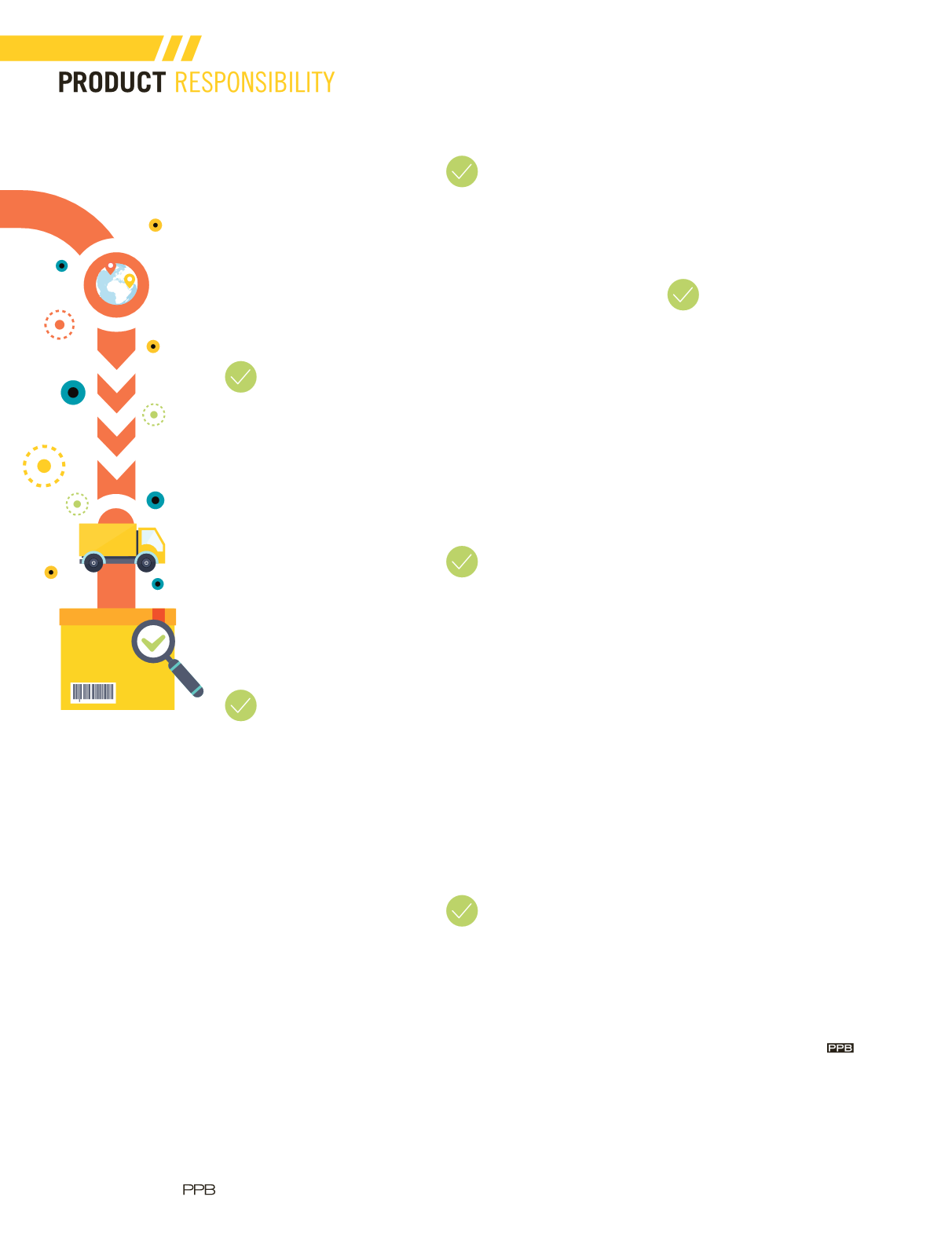

74
|
JANUARY 2017
|
THINK
to define possible legislation and
industry standards that may
apply to your product. Most
importantly, it allows you to
anticipate the standards and
testing your customer may want,
and guides you on how to discuss
these with customers from an
informed position.
Know your
customer.
Consider
the brand values of your
potential customer. Does the
brand have anything to do with
the environment, health or
children? If so, chances are their
compliance requirements will be
much higher and you’ll want to
pitch them products that have
high compliance standards. Also,
consider if they have had recent
issues with products in the
marketplace, as this usually
affects their risk tolerance.
Set a compliance
baseline.
Take stock of
your bigger customers and make
sure your standard testing policy
is up to their expectations.
Testing to the legal minimum
should be the starting point and
helps ensure you aren’t
introducing regulatory risk to
your customer’s supply chain. A
few years ago the “legal
minimum” would satisfy most
customers, but this is rapidly
changing. Many industry
standards are now considered a
minimum requirement even if
not legislated. On top of that,
compliance to many laws, such
as California’s Proposition 65 and
Illinois’ Lead Poisoning
Prevention Act, can be tackled in
different ways.
Segment your
product line.
One
strategy that many companies
have adopted is to split up your
product offering based on
compliance. For example, if you
have a big-brand customer that
treats everything as though it’s a
children’s item, it may be worth it
to test a larger portion of your
product line to the CPSIA
standard to capture more
business. Another tactic is to
provide Proposition 65
protection to a line of products
for those customers that ship to
California but don’t like to apply
a warning label.
Scrutinize your
lab proposals.
It’s as
important to know when to say
“no” as it is to say “yes.” Many
labs may blur the line between
testing that is mandatory and just
a best practice. You might end up
with a Cadillac testing plan when
all you need is one suited to a
Kia. Make sure you get an
itemized list of each test method
and understand what law or
industry standard it is designed
to meet. This will help keep costs
down as your testing activities
become more complex.
Guide your
customer.
Often client
companies have a compliance
standard that they don’t really
understand. In some cases,
they’ll appreciate some pushback
and updates if there is good
reason to do so. In many cases
this can help save on testing costs
as well as widen the types of
products they can include in
their program. In the end, you
may be able to lead your
customers to a different place
from where they started, as well
as giving you an opportunity
to impress.
Consider screening
technologies.
Having quick, in-house testing
technologies can give a company
a way to quickly prove that their
products are safe. In some cases,
when a customer has a
compliance requirement not
based on legislation, a quick scan
by an XRF analyzer or portable
FTIR testing equipment may be
enough to satisfy the
requirement without the need for
expensive and time-consuming
third-party testing.
Over time you may develop
compliance strategies for each
customer and end up with a
complex web of requirements.
And we haven’t even discussed
social compliance yet, which
also brings another level of
audit formats, documentation
and expectations.
In the end, we may be
setting up small, separate
supply chains for each major
customer that produces
products to specific standards.
To do that well, a company
needs in-house compliance
expertise, close factory
partners and a culture of
transparency. Companies that
are successful at this should
be well positioned for the next
five years as the promotional
products industry evolves.
Josh Kasteler is director of product
integrity at distributor BAMKO.
Reach himat
jkasteler@bamko.net.It’s as important
to know when
to say “no” as it
is to say “yes.”
Many labs may
blur the line
between testing
that is mandatory
and just a
best practice.
















